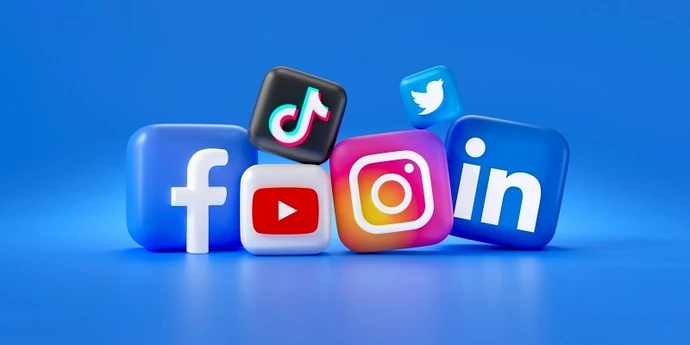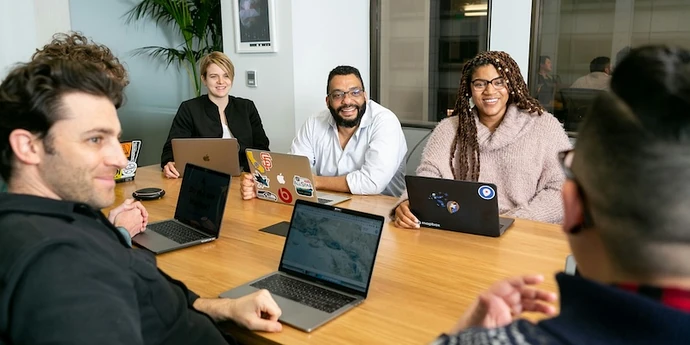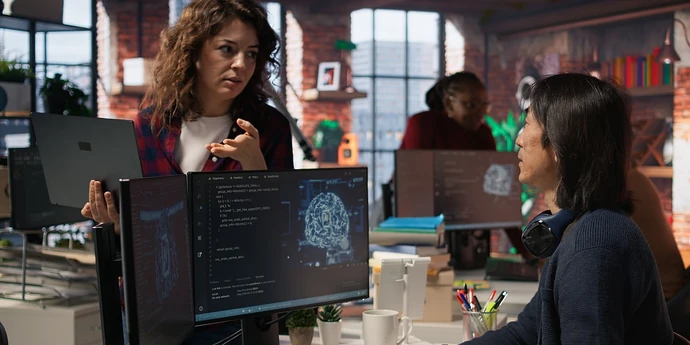In this guide, we’re going to cover everything you need to know to prepare for product manager interviews at Nvidia.
Information on Nvidia job interviews is hard to find online, especially for the product manager (PM) role.
One thing is for sure: Nvidia product manager interviews are extremely competitive. You’ll face in-depth and challenging questions over the course of up to nine interview rounds.
Thankfully, the right preparation makes all the difference.
We’ve gathered interview information from real Nvidia PM candidates and our coaches, who have experience helping candidates prepare for PM interviews at Nvidia.
Below, you’ll find an overview of the interview process, example questions, how to answer them, and a preparation plan.
Click here to practice 1-on-1 with Nvidia interview coaches
1. Nvidia Product Manager Role and Salary↑
Before we get into the details of your PM interviews at Nvidia, let's take a quick look at the role itself.
1.1. What does a Nvidia Product Manager do?
Nvidia has nine key teams at work: artificial intelligence (AI), auto, data center, gaming, graphics, hardware, research, robotics, and worldwide field operations (WWFO).
No matter what specific product or area of operations you work in, as a product manager, you are expected to have demonstrated the ability to excellently define, manage, and enhance products and services.
This requires that you have both strong technical and soft skills and a clearly expressed approach to strategy, execution, and user experience.
You must also demonstrate leadership potential and show that you’re a strong cultural fit for Nvidia.
1.2. What skills are required to be a Nvidia Product Manager?
Like any top company, Nvidia expects its PMs to be great communicators with strong leadership skills. However, Nvidia places a higher emphasis on technical skills compared to companies like Meta and Amazon.
We analyzed 10 Nvidia product manager job descriptions and found that the most commonly expressed requirements are:
- Expertise in a specific product area and in modern project management frameworks, methodologies, software, and tools
- Analytical and strategic thinking skills
- Strong organizational skills and keen attention to detail
- Strong communication and collaboration skills
- Demonstrated ability to translate technical concepts into business value propositions for both technical and non-technical audiences
- Ability to thrive in ambiguity, complexity, and multiple priorities
Candidates typically have a strong background in applied mathematics, computer science, engineering, business administration, or related fields. They must also possess at least five years of technical product leadership experience in a technology company.
1.3. How much does a Nvidia Product Manager make?
A great salary is likely one of the reasons you're interested in working at Nvidia, so let's take a look at how much you could potentially earn.
Nvidia product managers’ average salary is 33% higher than the U.S. national average salary of $111,729 for product managers.
Nvidia follows a hierarchical job structure. Depending on the Nvidia PM role’s individual contributor (IC) level, the average base salary for product managers at its Santa Clara, California, headquarters is from $157,300 to $295,000 annually.
The average total compensation by level, which includes stock options and bonuses, ranges from $193,100 to $508,500. The median total compensation is $341,500.

Where you’re located will impact your salary, too. Nvidia has more than 60 offices worldwide, with 21 in the Americas, 17 in Asia, and 31 in Europe. The highest product manager salary rates are in Sta. Clara, CA; Redmond, WA; and New York, NY.
Ultimately, though, how you do in your interviews will help determine what you’ll be offered. This is why hiring one of our product manager interview coaches can provide you with significant returns on your investment.
Also remember that compensation packages can still be negotiable, even at Nvidia. So, if you do get an offer, don’t be afraid to ask for more. If you need help negotiating, check out our product manager salary negotiation guide for tips and consider booking one of our salary negotiation coaches to get expert advice.
2. Nvidia Product Manager Interview Process and Timeline↑
The Nvidia product manager interview process typically takes from six to eight weeks from the time you submit your application. It will largely depend on whether you progress to the next stage of interviews.
The interview process usually begins with two phone screening calls. Then, once you clear those screenings, you'll proceed with six to seven back-to-back onsite interviews, which can take from 30 minutes to an hour each.
Now we’ll cover each of the steps in more detail, so you can get a better idea of what to expect and how to prepare.
2.1. Resume, cover letter, and referrals
Step one is getting the interviews. For this, you’ll need a quality resume that is tailored to both product manager positions and Nvidia, more specifically. If you have yet to apply, you can optimize your documents with tips and best practices from our product manager resume guide and getting FAANG recruiters or PMs to review your resume.
As with most companies, it can also be helpful to get an employee or contact at Nvidia to refer you to the recruiting team. In our experience, the most straightforward way to do this is to contact Nvidia employees you share connections with directly on LinkedIn.
According to Glassdoor, 44% of Nvidia product manager candidates who’ve managed to get an interview applied online, another 44% applied via employee referral, and 11% applied via a recruiter.
2.2. Screening calls
You'll usually start your interview process by talking to an HR recruiter on the phone. They are looking to confirm that you've got a chance of getting the job at all, so be prepared to explain your background.
If you’re unsure about what steps are ahead in the interview process or have other questions, take this opportunity to ask your HR recruiter about what you can expect. The recruiter will be your point of contact for the rest of the interviews.
After talking to the recruiter, your next interview will usually be with the hiring manager. Be ready to go more in-depth on your product knowledge than you did on the recruiter phone screen.
Expect the following types of questions, which we’ll cover in detail in the next section:
- Cultural fit questions
- Communication and collaboration questions
- Leadership and execution questions
- Product sense and strategy questions
Candidates for the more technical product manager roles may be asked to complete a coding exercise, typically using HackerRank or a similar tool.
2.3. Onsite interviews
If you pass your hiring manager phone screen, you’ll move on to the onsite interviews. These may take place at Nvidia’s offices or virtually, over video calls. They can be one-on-one, small group, or panel interviews.
As you move further along the series of up to nine interviews, it can get quite intense, with some onsite interviews taking up to five hours with minimal breaks.
Let’s now dive into the kinds of questions you can expect during your onsite interviews.
3. Nvidia Product Manager Interview Questions↑
Below, we've compiled lists of real questions from Nvidia product manager interviews based on data from Glassdoor, Blind, and other sources, as well as our coaches’ insights.
To help you structure your preparation, we've organized them into seven categories.
- Cultural fit questions
- Communication and collaboration questions
- Leadership and execution questions
- Product sense and strategy questions
- Product prioritization questions
- Data analysis and decision-making questions
- Technical questions
We’ve included real Nvidia example questions for each category, as well as some typical PM question examples commonly asked at other top tech companies.
3.1. Cultural fit questions↑
Nvidia’s work culture is grounded on its five core values of innovation, speed and agility, intellectual honesty, excellence, and working together as one team, “with no politics, no hierarchy.” Nvidia does have reporting lines, but teams form around projects, depending on the skills required.
Your interviewers will ask you questions to test whether your values, motivations, and way of working make you a good fit for Nvidia.
Let’s take a look at some real questions reported by Nvidia PM candidates.
Example Nvidia cultural fit questions
- Tell me about yourself.
- What are you looking for in this Nvidia role?
- Tell us why you are a good fit for this position.
- Why do you want to work at Nvidia?
Learn more about why interviewers ask the "Why this company?" question and how to answer it well.
3.2. Communication and collaboration questions↑
Nvidia wants to know if you have the skills necessary to build strong relationships, communicate with other stakeholders, and effectively collaborate with other teams, especially engineering teams.
You’ll need to show you’re comfortable clearly articulating product vision, strategy, and requirements to various stakeholders (engineering, marketing, sales, etc.) - Anand, PM interview coach
Your interviewer will ask you a range of behavioral and hypothetical questions to determine if you have the relevant soft skills.
Let’s take a look at some examples.
Example Nvidia communication and collaboration questions
- Describe a time when you had to work with a cross-functional team to launch a product. What challenges did you face, and how did you overcome them?
- How would you communicate a complex technical issue to a non-technical audience?
- What are the tools you use to communicate with engineers and tech people, and how have these been effective?
- How do you earn the trust of your team?
Get more tips here on how to answer behavioral questions at tech companies.
3.3. Leadership and execution questions↑
According to Anand, a PM coach who has worked with numerous Nvidia candidates, this interview round aims to test whether you’re capable of “taking ownership of the product development process, from ideation to launch and beyond."
Interviewers also typically ask you which tools you have been using, and how familiar you are with product management methodologies.
You may also get some scenario questions where the interviewer tests your approach to a tricky problem as a PM.
Nvidia candidates reported the following questions:
Example Nvidia leadership and execution questions
- What is the best way to launch a new product idea?
- Tell me about a product you led from idea to launch.
- Tell me about the product life cycle for tech products and the product manager’s role in it.
- Describe a project that you wish you had done better. How would you do it differently today?
- Tell me about a time when you identified a bigger opportunity than others thought it could be.
- How do you estimate the market for a new product?
- How do you monitor market signals and measure how satisfied customers are with your product?
- You take the CEO for a drive in our autonomous driving car, and he says that the ride was bumpy. As a product manager, what will you do?
3.4. Product sense and strategy questions↑
Nvidia prides itself on “making unique contributions to solving some of the world’s most stimulating technology problems.” A significant number of industries, from gaming to scientific exploration, rely on its products.
Nvidia wants to see that you know and understand their products, their business, their markets, and their competitors.
Coach Anand shared that interviewers focus on these points:
- Understanding of Nvidia's products and target markets: Demonstrating a grasp of Nvidia's hardware and software offerings, along with knowledge of the industries they serve (gaming, data centers, AI, automotive, etc.).
- Identifying customer needs and pain points: Being able to articulate user needs and how Nvidia's products can address them.
- Developing product strategies: Crafting a vision for a product or feature and articulating a roadmap for execution.
Product sense questions may also include questions on product design, product improvement, and product strategy.
All the example questions below are from Nvidia candidates.
Examples of Nvidia product sense and strategy questions
- What is your go-to process and method to improve a given product in a given time period?
- How would you improve the user experience of Nvidia’s GeForce NOW cloud gaming platform?
- What opportunities do you see for Nvidia to expand into new markets with its AI technology?
- If you were to launch a new product line for Nvidia, what would it be and why?
- Describe an Nvidia product. How would you improve it?
If you'd like to learn more about answering these kinds of questions, then check out our guides on how to crack product sense interviews, and how to answer product design questions and product improvement questions.
3.5. Product prioritization questions↑
Prioritization is a crucial part of any PM role. Both from a high-level perspective when you’re creating the product roadmap, and on a low level, such as when choosing between two product features.
Nvidia interviewers ask prioritization questions to assess your decision-making skills when making trade-offs. They want to see that you are capable of using frameworks in order to structure your approach.
You’ll need to deconstruct the problem, identify opportunities, prioritize solutions, and explain your approach.- Emily, PM interview coach
All the example questions below are from Nvidia candidates.
Example Nvidia product prioritization questions
- How would you prioritize resources when you have two important things to do but can't do them both?
- What is your framework for deciding between user-centric vs. product stability and engineering-focused features in a product release?
- Tell me about a time when you had to make a difficult decision with limited information. How did you approach the situation, and what was the outcome?
- How would you prioritize and manage multiple competing projects?
- Describe a product you’ve launched. What was your role, and what were the key challenges and successes?
For a deeper dive on this topic, click here for more tips on cracking product prioritization interview questions.
3.6. Data analysis and decision-making questions↑
This round is similar to the “analytical thinking” round at Meta. Nvidia wants to know that you’re comfortable working with data and making decisions in a data-driven way.
Coach Anand explained to us that interviewers are testing your ability in the following three areas:
- Interpreting data: Analyzing data to derive insights, identify trends, and make informed product decisions.
- Prioritizing features: Using data and market analysis to prioritize features that will have the most impact.
- A/B testing and experimentation: Designing and analyzing experiments to validate hypotheses and measure the impact of product changes.
To test your data analysis skills, Nvidia tends to ask what we call “metrics” questions, with some estimation questions also being asked occasionally.
Metrics questions test how you can define key metrics to measure success or failure, or how effectively you can get to the root cause of a change in a key metric.
Estimation questions test how comfortable you are with numbers and whether you can make back-of-the-envelope calculations to assess key market information.
The first example questions in each of the metrics and estimation subcategories below are from Nvidia candidates. The rest are common analytical questions asked in PM interviews for tech companies.
Example Nvidia metrics questions
Metric definition
- How would you measure the success of a new feature launch by Nvidia?
- How would you determine the negative value of an abusive posting?
- How would you measure the success of the new YouTube player UI?
- What are the things that Netflix should measure and analyze on a daily basis?
Metric change
- You're seeing a decline in sales of a particular Nvidia product. How would you investigate the causes and propose solutions?
- You have just localized an e-commerce site in Spain and now see that traffic has been reduced—what could be the reasons?
- You are the PM of Facebook 3rd Party Login, and you see that your numbers are declining 2% week-on-week. What do you do?
- Reddit traffic went down 5%—how would you report this issue to the executive team?
Example Nvidia estimation questions
- Given a set of data, analyze it and tell us what insights you can derive to inform product decisions.
- What is the market size for toilet paper in the U.S.?
- What is the required internet bandwidth for an average college campus?
- How many millennials own homes in the U.S.?
Check out our articles on how to ace product metrics questions and how to answer estimation questions.
3.7. Technical questions↑
Nvidia is a global leader in AI, data science, and high-performance computing. As such, it’s a very technical company. Candidates have been told that even PMs need strong engineering understanding to succeed, although this may depend on the exact PM role.
At Nvidia, technical questions for product managers may focus on:
- Understanding of technology concepts: While not requiring deep technical expertise, Nvidia PMs need a solid understanding of the technologies underpinning their products (e.g., GPUs, AI, deep learning).
- Translating technical details into product features: The ability to bridge the gap between technical capabilities and user-facing benefits and features
The first three example questions below have been asked of product manager candidates at Nvidia. The rest are questions asked of candidates from other top technology companies (Google, Meta, Amazon, etc.).
Example Nvidia technical questions
- Explain how GPUs are used in deep learning applications.
- What are the key differences between Nvidia’s RTX and GTX series of GPUs?
- How would you design a product to leverage Nvidia’s CUDA platform?
- Predict whether the next letter in this pattern is a vowel or a consonant.
- Explain what APIs are to a non-technical person.
- There is a latent bug in the hardware already shipped. What do you do?
- How would you most efficiently store large images in a database?
- How do you optimally query the database to get faster results?
- When are Bayesian methods more appropriate than artificial intelligence techniques for predictive analytics?
Read this guide to better prepare for technical questions in your product manager interview at Nvidia. If you're specifically interviewing for an AI-focused role, take a look at our guide to AI product manager interview questions.
4. Nvidia Product Manager Interview Tips↑
You might be an excellent product manager, but unfortunately, that’s not necessarily enough to ace your interviews at Nvidia. Interviewing is a skill in itself that you need to learn.
Let’s look at some key tips to make sure you approach your interviews in the right way.
4.1. Ask clarifying questions
Some of the questions you will be asked will be quite ambiguous. In those cases, you’ll need to ask clarifying questions to get more information about the problem and to reduce its scope.
Jumping straight in without asking questions first will be a red flag to the interviewer and will hinder your answer.
For instance, if you were asked, “What would be your 10-year strategy if you were CEO?”, you could respond by asking some questions about the company’s current situation and any business objectives the interviewer may have in mind.
This way, you’ll have a better understanding of what the company needs in the coming years and have more information from which to build a strategy.
4.2. Justify your choices
Nvidia wants to see the reasoning behind your answer, so make sure to justify each decision you make. You'll need to make plenty of trade-offs as you arrive at a solution, so be sure to call them out.
One of Nvidia’s valued behaviors is “responsible risk-taking” for innovation, while acting with “speed and agility.” Keep these in mind when answering decision-related questions.
4.3. Be data-driven, but not too data-driven
Nvidia is looking for product managers who can make decisions based on data and can judge everything they do by relevant metrics.
In an interview situation, it's okay to make assumptions because you might not have access to the facts and data. But you need to make it clear that in real life, you would seek out that data and that your approach would be highly data-driven.
4.4. Demonstrate user empathy
Nvidia wants product managers who can empathize with its users, since all innovation comes from a deep understanding of the customer experience.
When answering a PM interview question, your first instinct should be to focus on the user. Identify who uses the product, why, and what the use cases are. Avoid designing a product based solely on personal preferences.
As part of your preparation, think hard about the different kinds of users across Nvidia’s technological ecosystem and be prepared to divide them into segments.
4.5. Check in with your interviewer
Interviewers differ in their willingness to provide hints. Some may wait for you to ask about customer or product details, while others expect you to make assumptions on your own.
Gauge this by asking a direct question or specifying your assumptions. If the interviewer tends to offer specifics, they’ll engage. If not, limit additional questions to demonstrate your ability to make decisions independently.
4.6. Answer methodically by using a framework
Like other tech companies, Nvidia wants you to solve a problem methodically.
We recommend the BUS (Business objective - User problems - Solutions) framework for answering product insight questions and the SPSIL (Situation - Problem - Solution - Impact - Lessons) framework for behavioral questions.
4.7. Don’t get stuck in a framework
As we just said above, frameworks are extremely helpful. However, some of our successful candidates have mentioned that excessive reliance on frameworks may hinder your performance.
During the interview, trust your instincts, and don’t be afraid to deviate from the framework if needed. A framework is there to help you craft a better answer, not make you twist your answer to fit the framework.
4.8. Center on the company’s core values
When answering cultural fit and behavioral questions, share stories from past experiences that align with Nvidia’s core values. When designing a product or coming up with a strategy, consider how your answer aligns with these values.
4.9. Treat the interview like a conversation
Keep in mind that the interview is a two-way discovery process. While the interviewer assesses if you’re a good fit for Nvidia, you’re also evaluating if the company aligns with your aspirations and preferences.
4.10. Save questions and feedback for your interviewer
You’ll have a few minutes to ask your interviewer questions as the interview wraps up.
Prepare thoughtful questions that go beyond what you can find online. You can ask about career growth opportunities or specific ways of working in the company. It's your chance to showcase genuine curiosity and investment in the conversation.
Arriving without questions may suggest a lack of interest in the company or the role.
5. Nvidia Product Manager Interview Preparation Plan↑
Now that you know what questions to expect, let's focus on preparation.
Below, you’ll find links to free resources and four key preparation steps to help you prepare for your Nvidia product manager interviews.
5.1. Deep dive into the product/organization
As you've probably figured out from the example questions listed above, you can't become a PM at Nvidia without being familiar with the company's products and the organization itself. You'll therefore need to do some homework before your interviews.
Here are some resources to help you get started with this:
- Life, culture, and career at Nvidia
- Nvidia blog
- Nvidia annual reports and proxies
- Nvidia employee content and testimonials
- Nvidia’s innovation strategy
5.2. Learn a consistent method for answering PM interview questions
As mentioned previously, Nvidia will ask you questions that fall into certain categories, such as cultural fit, communication and collaboration, leadership and execution, product sense, strategy, and prioritization questions. Approaching each question with a predefined method will enable you to build strong interview habits.
Then, when it comes time for your interviews, these habits will reduce your stress and help you make a great impression.
Speaking of interview time, if you get to the onsite interview phase, prepare for a series of interviews with six to seven people in one day, with minimal breaks. This might not happen in your case, but it’s best to prepare for extreme situations.
If you’re just looking for a jumping-off point, you can start learning about the different question types you’ll need to master in the following PM interview guides:
- Behavioral questions
- PM behavioral questions
- Product sense questions
- Product design questions
- Product improvement questions
- Favorite product question
- Strategy questions
- Estimation questions
Once you’re in command of the subject matter, you’ll want to practice answering questions. But by yourself, you can’t simulate thinking on your feet or the pressure of performing in front of a stranger. Plus, there are no unexpected follow-up questions and no feedback.
That’s why many candidates try to practice with friends or peers.
5.3 Practice with peers
If you have friends or peers who can do mock interviews with you, that's an option worth trying. It’s free, but be warned, you may come up against the following problems:
- It’s hard to know if the feedback you get is accurate
- They’re unlikely to have insider knowledge of interviews at your target company
- On peer platforms, people often waste your time by not showing up
For those reasons, many candidates skip peer mock interviews and go straight to mock interviews with an expert.
5.4 Practice with experienced PM interviewers
In our experience, practicing real interviews with experts who can give you company-specific feedback makes a huge difference.
Find a Nvidia product manager interview coach so you can:
- Test yourself under real interview conditions
- Get accurate feedback from a real expert
- Build your confidence
- Get company-specific insights
- Learn how to tell the right stories, better.
- Save time by focusing your preparation
Landing a job at a big tech company often results in a $50,000 per year or more increase in total compensation. In our experience, three or four coaching sessions worth ~$500 make a significant difference in your ability to land the job. That’s an ROI of 100x!















